Deleting non-existent victims from historical works will not be able to erase from our memory the ordeal of exiles. However, history must be written honestly. Even when the documents contradict Polish tradition and statements repeated from generation to generation.
If you're a bloody dictator sniffing all over conspiracies, and you've just taken armed territory, your wetboys will have their hands full. Especially when you are expecting a war. We must get rid of all possible internal enemies in advance - both real and imaginary. This was the case in the territories of the Second Polish Republic conquered by the USSR as a result of the implementation of the Ribbentrop-Molotov Pact
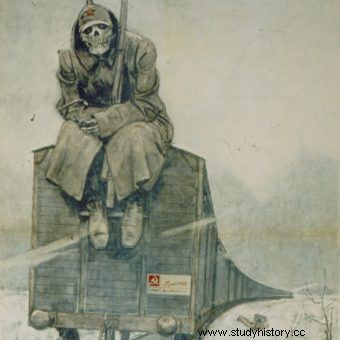
.
Arrests, forced conscription to the Red Army, deportation to labor camps, and executions (with and without a sentence) affected hundreds of thousands of citizens of pre-war Poland. The catalog of repression also included mass deportations into the depths of the endless Stalinist empire.
No other dictator had at his disposal such a gigantic amount of empty land enabling the displacement of even entire nations. Peasants fighting against collectivization, Crimean Tatars, Kurds, Koreans, Caucasus peoples, Ukrainians, Germans, Lithuanians, Kalmyks ... Stalin tossed thousands of lives across the map without batting an eye. He did the same with the Poles.
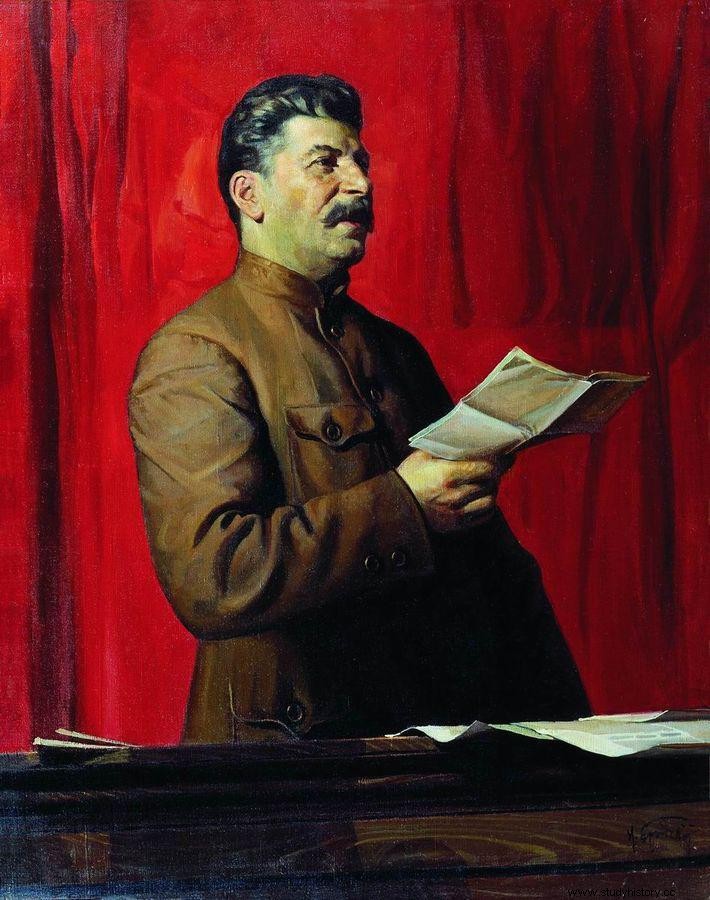
Only Stalin could afford to deport entire nations. The illustration shows a portrait of the Soviet dictator by Isaak Brodski (source:public domain).
As Kacper Śledziński writes in his latest book, 'Wyklęta army. The Odyssey of Anders' Soldiers ”:
NKVD General Ivan Aleksandrovich Serov took great care to "clear the hinterland of anti-Soviet elements." He acted on the orders of his immediate superior - People's Commissar for Internal Affairs, Lavrenty Beria. (…)
The Soviet government banged on the doors of thousands of Lviv, Stanisławów, Tarnopol apartments and many smaller and larger towns in the eastern provinces of Poland. Town streets and villages deserted.
1,700,000 deported, 900,000 dead?
By the time of the German invasion on June 22, 1941, four large deportations had been carried out in the territories of the Second Polish Republic incorporated into the Soviet Union. On the night of February 9-10, 1940, families of Polish civilian and military settlers and foresters were transported from there to "Siberia".
On April 13, the NKVD dealt with the relatives of those arrested, as well as prisoners of war later murdered as part of the Katyn massacre. Trains filled mainly with women, children and the elderly went east.
On the night of June 28-29, 1940, the refugees from the areas occupied by the Germans, mostly Jews, were chased into freight wagons. Finally, between May 22 and June 20, 1941, an action was carried out to "cleanse" the western border of the USSR of "socially alien elements", such as former gendarmes, guards, policemen, landowners, traders, officials, criminals, prostitutes and others - of course together with families.
You can read about the scale of these operations in the already cited book by Kacper Śledziński entitled "The cursed army. The Odyssey of Anders' Soldiers ”:
Several sets of (...) trains were sent daily - one set consisted of about 60 cars - to the junction stations (...), from which whole counties were sent into exile. In February, for several days, all rolling stock was used for these shipments. Other freight traffic (...) did not take place at all then.
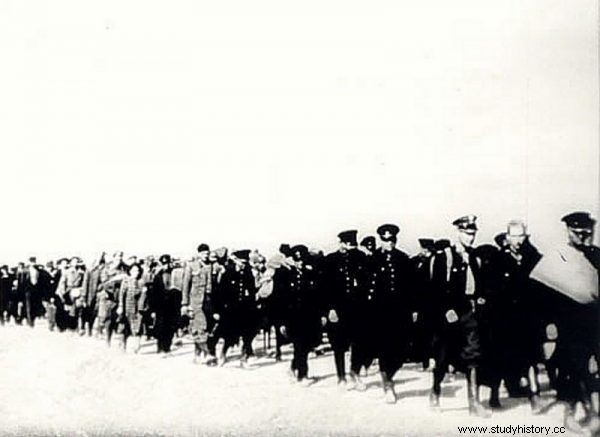
Polish policemen and civilian "enemies of the people" arrested by the NKVD in September 1939 (source:public domain).
As early as 1940, the Polish underground and the emigration authorities tried to estimate the number of deportees, and these efforts were continued during the war. After its completion, the deportations were documented by émigré historians. Initially, it was written about a million deportees, then even about 1,700,000 deportees , including 900,000 who died from hunger, cold, disease and exhausting work. These shocking numbers are still seen in the press, television, and even in publications aspiring to the name of science. Trouble is, they're far from real.
Shocking changes
All these estimates were affected by the same error. They were created on the basis of partial data, mainly the accounts of the deportees themselves, who did not have a comprehensive view of the repression and exaggerated its scale.
When the Russian archives were opened in the early 1990s, historians were finally able to familiarize themselves with the NKVD files documenting successive waves of Stalinist terror. The results of their work turned out to be shocking. On the one hand, they revealed the enormity of the crimes and atrocities, and on the other hand, they verified the previous courts, sometimes quite radically.
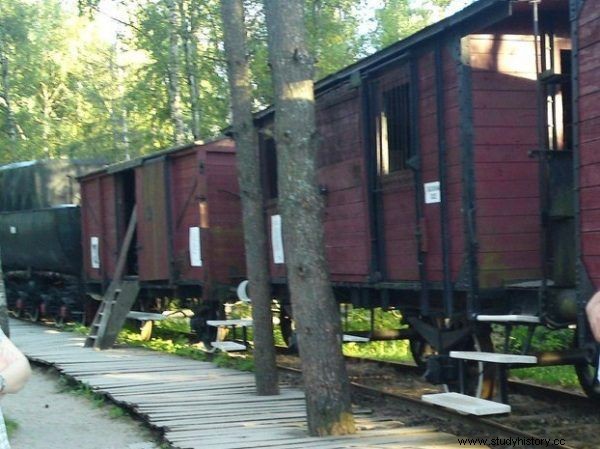
It was in such wagons that hundreds of thousands of inhabitants of the borderlands of the Second Republic of Poland were transported to the east (photo:Steffen Voß; license CC BY 2.0).
It turned out that the four deportations described concerned approx. 320,000 citizens of the Second Polish Republic . This number included about 25,000 Ukrainians, 20,000 Belarusians and 70,000 Jews, who were affected by deportations to the same extent as Poles (the remaining 200,000-210,000). Until the "amnesty" announced in the USSR in the summer of 1941, the death rate among the exiles ranged from 2.8% to 5.8% per year. How many people died after that date - it is impossible to say, but certainly many more people survived than it had been assumed before.
The truth from the NKVD files
Such a radical reduction in estimates caused enormous resistance, especially in Siberian circles. The new data was perceived as an attempt to minimize the tragedy of the deportees. Historians were dismissed of their worship and faith, they were accused of manipulation and lack of reliability, their Polishness and patriotism were questioned. The files of the NKVD were assessed as worthless. Completely wrong.
There is no reason to suppose that the NKVD was deceiving itself and its superiors, headed by Lavrenty Beria and Joseph Stalin. The documents used to establish the actual number of deportees were top secret and intended for internal use. Although they have been drawn up at different administrative levels, central and local, for different audiences and in different parts of the country, one coherent picture emerges.
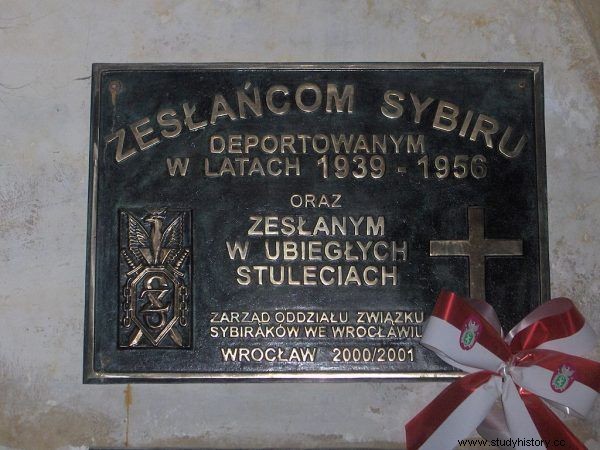
The attempt to verify the number of deportees aroused strong protests in the Siberian community. In the photo, a plaque dedicated to the exiles of Siberia, embedded in the St. Elżbieta (photo:Poznaniak1975; license CC BY 3.0).
Moreover, the data taken from these documents have been partially verified by means of named lists over 56,000 people displaced to the Arkhangelsk region. These lists are so complete that no one has been missed so far.
Is that important?
Protesters against the "new" (more than twenty years old) arrangements seem to believe that the reduction in the number of deportees reduces and downplay their tragedy. Such thinking must be firmly rejected. Auctioning the repressed, the dead and the killed does not lead to anything, and the deletion of non-existent victims from historical works does not in any way erase the ordeal of hundreds of thousands of exiles from our memory. The truth cannot be anti-Polish.
Bibliography:
- Jerzy Autuchiewicz, The status and prospects of research on the deportations of Poles into the USSR and the related terminological problems , [in:] Deportations and migrations (eastern thread). Research status and prospects , edited by Marcin Zwolski, Institute of National Remembrance, Warsaw-Białystok 2008.
- Stanisław. Ciesielski, Grzegorz Hryciek, Aleksander Srebrakowski, Mass deportations of people in the Soviet Union , Adam Marszałek, Toruń 2004.
- Stanisław Ciesielski, Wojciech Materski, Andrzej Paczkowski, Soviet repressions against Poles and Polish citizens , Ministry of Justice of the Republic of Poland, Warsaw 2002.
- Albin Głowacki, The Soviets versus Poles in the eastern territories of the Second Polish Republic 1939-1941 , Łódź 1997.
- Also, Deported in 1940-1941 , [in:] Poland 1939-1945. Personal losses and victims of repression under the two occupations , ed. Wojciech Materski, Tomasz Szarota, Institute of National Remembrance, Warsaw 2009.
- Aleksander Guryanov, Deported from the Eastern Borderlands to Siberia (1940–1941) , [in:] Siberia in the history and culture of the Polish nation , ed. Antoni Kuczyński, Silesia Publishing House of the Lower Silesian Social and Cultural Society, Wrocław 1998.
- Tegoż, Soviet repressions against Poles and Polish citizens in the years 1936-1956 in the light of Soviet data , [in:] Non-provincial Europe , Warsaw 1999.
- Pavel Polian, Against their will. History and geography of forced migration in the Soviet Union , Museum of the Second World War, Gdańsk 2015.
- Kacper Śledziński, The Accursed Army. The Odyssey of Anders' Army , Znak Horyzont, Krakow 2017.
- W deportations, expulsions and escapes 1930–1959. Atlas of the lands of Poland , edited by Witold Sienkiewicz, Grzegorz Hryciek, Demart, Warsaw 2008.
